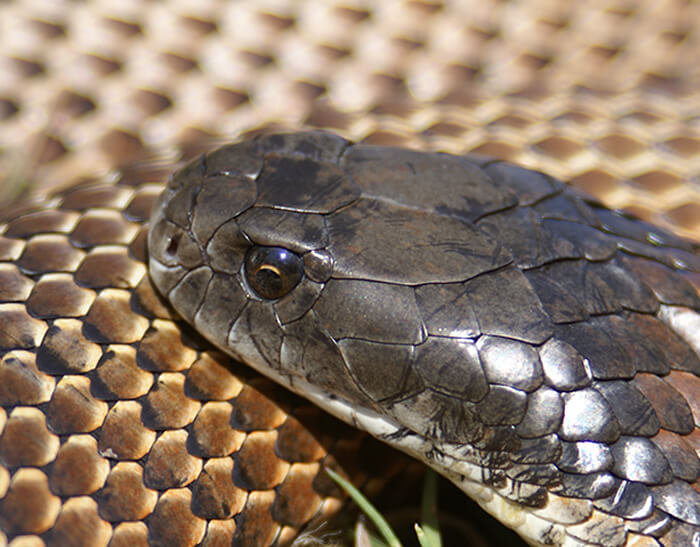Introduction
When it pertains to poisonous serpents, Australia is home to a few of the most fascinating and harmful species worldwide. Amongst these, the Tiger Snake stands out not only for its powerful venom but also for its appealing habits. Recognizing the behavior of venomous snakes like the Tiger Snake is crucial for both wild animals fanatics and those residing in locations where these snakes are present. This post looks into different elements of Tiger Serpent habits, habitat, identification, precaution, and emergency treatment techniques in case of a serpent bite.
Understanding the Habits of Venomous Snakes Like the Tiger Snake
The Tiger Snake, scientifically known as Notechis scutatus, is notorious for its hostile nature when threatened. These snakes display a range of habits that can be rather different from their non-venomous counterparts.
Characteristics of Tiger Snakes
The Tiger Serpent is easily identifiable due to its distinct bands or red stripes that resemble a tiger's markings. They can vary in shade from yellowish-brown to dark olive Sea Snakes Australia or black. This pigmentation serves not just as camouflage however also as a warning signal to possible predators.
Adaptability to Environment
One exceptional element of their actions is their versatility to numerous settings. Discovered largely in coastal areas, marshes, and marshes across Australia and Tasmania, they can grow in diverse habitats including metropolitan locations.
Hunting Techniques
Tiger Serpents are ambush killers mostly feeding upon fish, frogs, and little creatures. They possess keen sight and an acute sense of odor which assists them in finding victim effectively.
Venom Composition
Their poison contains neurotoxins that influence the nerve system, resulting in paralysis or death in smaller animals. For humans, immediate clinical focus is important after a tiger snake bite due to its potentially deadly effects.
Natural Environment of Tiger Snakes
Preferred Locations
Understanding where these snakes reside clarify their behavioral patterns. The tiger snake habitat includes:
- Coastal regions Swamps Grasslands Urban locations with abundant water sources
Seasonal Movements
During warmer months, Tiger Snakes are much more energetic as they bask in sunlight or search for food. On the other hand, cooler months see them retreating into hibernation sites.
Are Tiger Snakes Venomous?
Yes! The concern "are tiger snakes poisonous?" typically arises among those not familiar with this types. Their poison is thought about among the most dangerous amongst all serpent varieties worldwide.

Symptoms of a Tiger Serpent Bite
If bitten by a tiger serpent, symptoms may consist of:

- Localized pain Swelling at the bite site Nausea and vomiting Sweating and confusion
Immediate medical aid is critical as neglected bites can bring about severe health and wellness problems or even death.
First Aid for Snake Bites: Quick Feedback Guide
Knowing exactly how to provide first aid for a serpent bite might conserve a person's life. Below's what you need to do:
Step 1: Remain Calm
Keeping calmness assists slow down heart price which lowers venom spread.
Step 2: Paralyze the Impacted Area
Keep the impacted arm or leg still and below heart level if possible.
Step 3: Call Emergency Situation Services
Always seek professional medical help immediately after a serpent bite.
First Help for Snake Bite Set Essentials
A well-appointed snake bite emergency treatment kit should include:
- A compression bandage Antiseptic wipes A set of scissors A cold pack
Safety Preventative measures: Protecting against Snake Bites in Australia
Awareness Programs
Educating areas about neighborhood serpent varieties and their behaviors can substantially minimize experiences bring about bites.

Avoiding Unsafe Areas
Staying away from lengthy yard during warmer months lessens contact with snakes that could be resting or hunting.
Common Misconceptions Concerning Tiger Snakes
Many people believe misunderstandings concerning the actions of tiger snakes bring about unnecessary worry. Right here are some explanations:
Myth 1: All Tigers Are Aggressive
Not all tiger snakes will show aggressiveness if left uninterrupted; numerous prefer fleeing rather than confrontation.
Myth 2: They Chase Humans
Tiger snakes do not proactively Go to the website chase after human beings; they may strike when they feel endangered but will typically retreat if given space.
Conservation Initiatives Connected to Poisonous Snakes
Conservation efforts concentrate on informing neighborhoods about securing local wild animals while decreasing human-snake interactions.
Importance of Ecosystems
Understanding that venomous snakes play an important function in maintaining environmental balance aids foster gratitude instead of anxiety towards them.
FAQs Concerning Tiger Snakes
What should I do if I experience a tiger snake?- Maintain range and slowly retreat without sudden movements.
- While bites aren't very common as a result of awareness initiatives, they still take place yearly within Australia.
- Baby tiger serpents can provide complete dosages of venom in spite of being smaller; for this reason caution is encouraged around them.
- They largely take in frogs, fish, tiny animals like rodents, and other reptiles.
- It's illegal in most jurisdictions without correct licensing due to security issues regarding their venom.
- Wear durable boots and remain on marked tracks; appearance before putting hands or feet into hidden areas like rocks or logs.
Conclusion
Understanding the behavior of venomous snakes like the Tiger Snake not just enhances our understanding however also promotes security understanding amongst those living near their habitats. From Immobilization recognizing their characteristics, recognizing first aid protocols following a bite, via involving conservation efforts-- every element plays a necessary role in fostering coexistence with these remarkable reptiles while respecting their location within our ecosystem.
As we deepen our understanding with education and experience, we add favorably toward ensuring both human safety and wild animals preservation-- profiting all events involved!